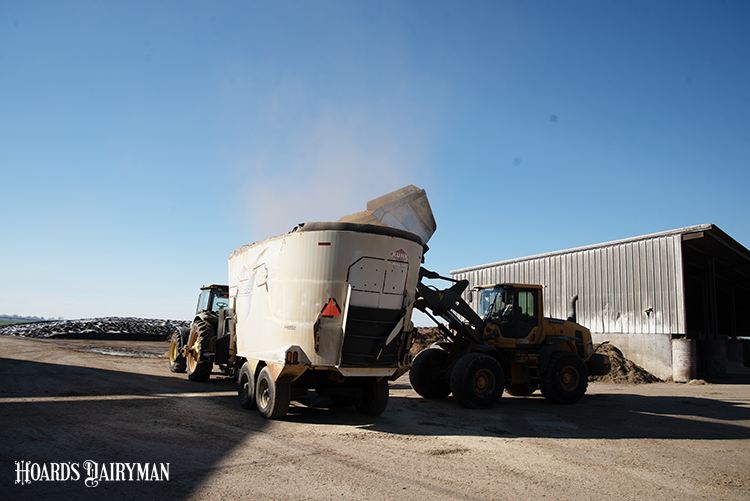
Consider for a moment the total dollars of investment you are trusting to your feeders to correctly implement toward the feeding of your cows. Feed has always been a big part of the total variable cost for a dairy. In 2022 and going forward, the level of investment will grow higher than ever.
When we first started closely tracking feed cost in cents per pound of dry matter (DM), the lowest-cost dairies had a cost of less than 10 cents per pound of DM. After the 2022 to 2023 crop year, those costs will be in the upper teens.
That begs the question . . . Is your feeder or your feed department leader like an investment fund manager?
The reason you buy feed is to convert it to milk income. The investment strategy is the diet formulation, and the daily feeding is the implementation of that strategy. Just like in the investment realm, if the daily trading is too unstructured, variable, changeable, and overall lacks discipline, the results may be less than expected.
The feeding team
I had the opportunity to present at an industry conference on the topic of diet formulation. The audience was comprised of dairy owners, herdsmen, feed department managers, and even some feeders. In the room were the folks that have the daily responsibility to correctly implement the plan. The success of the plan is largely in their hands.
Part of my feed evaluation process usually occurs early on a quiet morning in a comfortable spot, often involving nice background music, a dog, and a cup of coffee by my side. The feed mixing and delivery role played by the folks in my audience is not nearly as predictable or comfortable. The diet may be implemented in rain, snow, high winds, and dust storms. It may be further impacted by flat tires on loaders or wagons, frozen lines, employees not showing up for work, or diesel engine fluid (DEF) sensor error codes. It is not easy!
One of the goals of this conference was education and training on topics related to daily feeding. The technology that is available to help these folks be successful is amazing. I remember back in 1992 when I converted a hand-calculated feed sheet on the unfolded inside of a mastitis medication box and converted that into a Lotus 123 worksheet. This represented a big technological step at that time. Now, it is cloud-based feeding software with sensors everywhere, valves and motors that come on and go off based on the recipe, and an overall environment where everything is tracked in real time.
A conversation ensued
The questions that were voiced from the crowd in the smaller breakout training sessions were impressive to me. Some of these inquiries came from managers or dairy office staff that related to entering rations, tracking feeding progress, implementing changes, and evaluation of accuracy or other quality control opportunities.
From the folks in the room that work with the loaders and mixers, there were questions about making changes on the fly when the unexpected happens or a number of things related to better ways to implement the overall feeding plan. We talked about varying load sizes, ingredient loading orders for different systems, premixes, liquid application, and handling alternate rations. It is all very complicated. When compared to the handwritten loading pounds on the medicine box, this all might as well have been related to space travel. We have come a long way!
So, why all the fuss? Why put your feed department manager on a plane for a three-day training event?
Beyond the fact that the right feeder should want to learn and be better at their job, the risk of improper implementation of the nutrition plan should be encouragement enough.
Imagine the problems with a boardroom meeting at an investment firm where a high-level plan and strategy was set only to be followed up by a poorly trained daily trader that also had a “few ideas of his own.” This could end badly for all involved. In our dairy world, not only would the feed investment and return expectations not be met, but the health and well-being of the cows could be hurt as well.
I will continue to balance and model diets down to the fine-tuned decimal point. We might as well start out with the best ration possible built with the best feed cost management in place.
In addition, we need to continue to invest in our feeding staff. While providing them with a good work environment, we need to give them every tool possible to do it right. This may mean a plane ticket and a hotel room for a training conference, or maybe an investment in the newest and best feeding software and hardware you can buy. Saving money on the implementation of rations is the wrong place to look for ways to reduce cost on your dairy. Let’s feed the cows the best way we know how!








